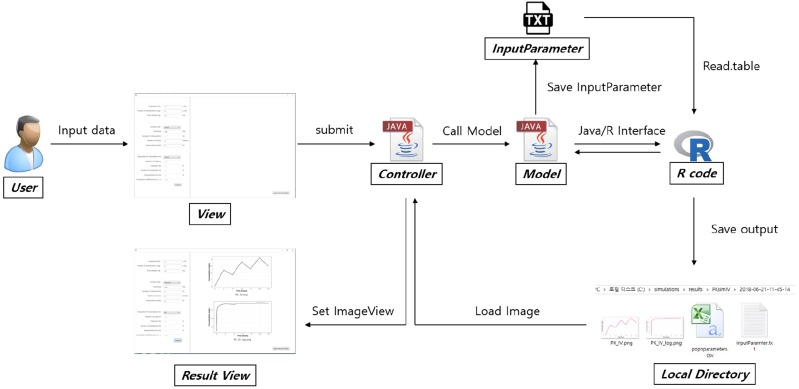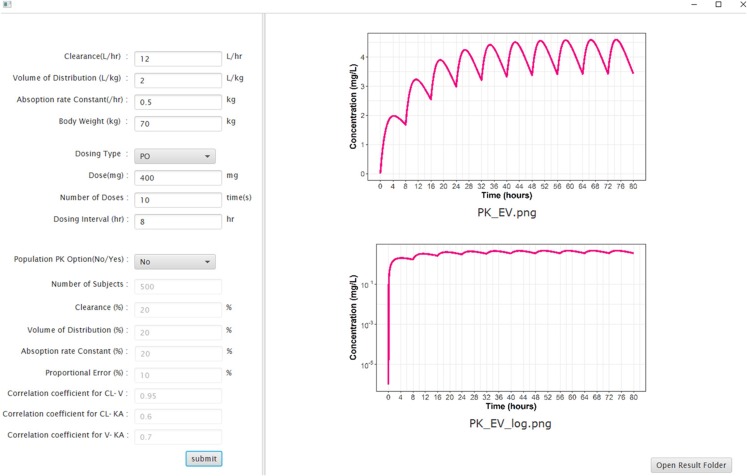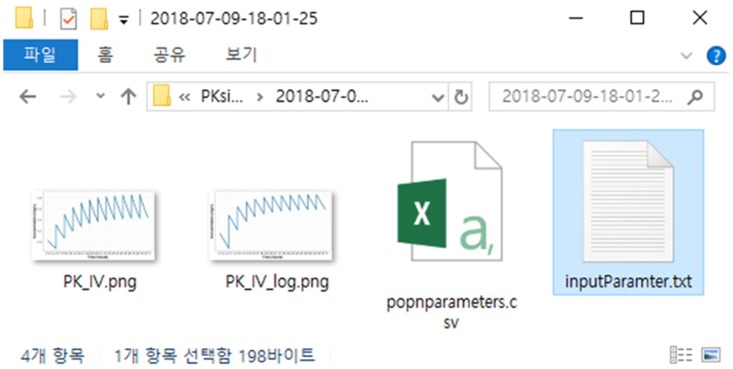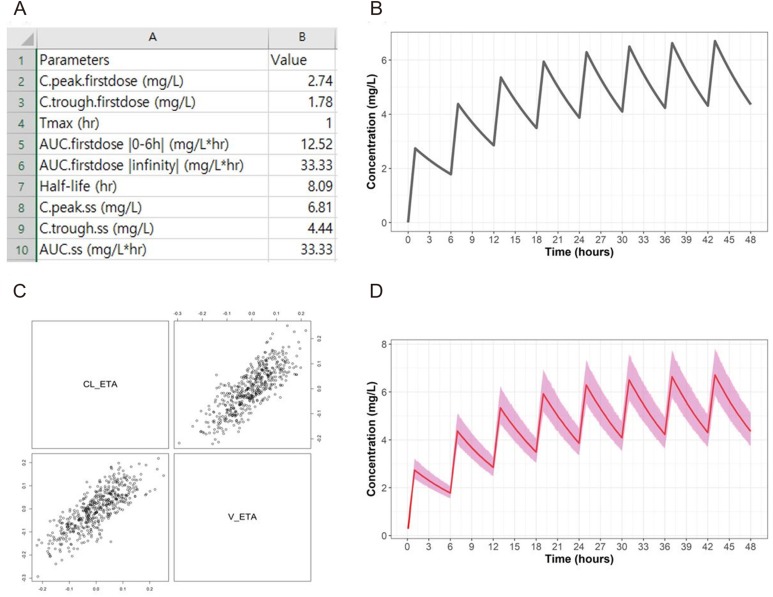Transl Clin Pharmacol.
2018 Dec;26(4):166-171. 10.12793/tcp.2018.26.4.166.
Development of a user-friendly training software for pharmacokinetic concepts and models
- Affiliations
-
- 1PIPET (Pharmacometrics Institute for Practical Education and Training), College of Medicine, The Catholic University of Korea, Seoul 06591, Korea. waystolove@catholic.ac.kr
- 2Department of Clinical Pharmacology and Therapeutics, The Catholic University of Korea Seoul St. Mary's Hospital, Seoul 06591, Korea.
- KMID: 2429512
- DOI: http://doi.org/10.12793/tcp.2018.26.4.166
Abstract
- Although there are many commercially available training software programs for pharmacokinetics, they lack flexibility and convenience. In this study, we develop simulation software to facilitate pharmacokinetics education. General formulas for time courses of drug concentrations after single and multiple dosing were used to build source code that allows users to simulate situations tailored to their learning objectives. A mathematical relationship for a 1-compartment model was implemented in the form of differential equations. The concept of population pharmacokinetics was also taken into consideration for further applications. The source code was written using R. For the convenience of users, two types of software were developed: a web-based simulator and a standalone-type application. The application was built in the JAVA language. We used the JAVA/R Interface library and the "˜eval()' method from JAVA for the R/JAVA interface. The final product has an input window that includes fields for parameter values, dosing regimen, and population pharmacokinetics options. When a simulation is performed, the resulting drug concentration time course is shown in the output window. The simulation results are obtained within 1 minute even if the population pharmacokinetics option is selected and many parameters are considered, and the user can therefore quickly learn a variety of situations. Such software is an excellent candidate for development as an open tool intended for wide use in Korea. Pharmacokinetics experts will be able to use this tool to teach various audiences, including undergraduates.
Keyword
Figure
Reference
-
1. Brinkman DJ, Tichelaar J, Mokkink LB, Christiaens T, Likic R, Maciulaitis R, et al. Key Learning Outcomes for Clinical Pharmacology and Therapeutics Education in Europe: A Modified Delphi Study. Clin Pharmacol Ther. 2018; 104:317–325. DOI: 10.1002/cpt.962. PMID: 29205299.
Article2. Maxwell SR. How should teaching of undergraduates in clinical pharmacology and therapeutics be delivered and assessed? Br J Clin Pharmacol. 2012; 73:893–899. DOI: 10.1111/j.1365-2125.2012.04232.x. PMID: 22360965.3. Dewhurst D. Is it possible to meet the learning objectives of undergraduate pharmacology classes with non-animal models? AATEX. 2008; 14:207–212.4. Cheluvappa R, Scowen P, Eri R. Ethics of animal research in human disease remediation, its institutional teaching; and alternatives to animal experimentation. Pharmacol Res Perspect. 2017; 5:e00332. DOI: 10.1002/prp2.332.
Article5. John LJ. A review of computer assisted learning in medical undergraduates. J Pharmacol Pharmacother. 2013; 4:86–90. DOI: 10.4103/0976-500X.110870. PMID: 23761705.
Article6. Brain S, Dewhurst D, Williams A. Evaluation of a computer-based learning program to support student learning in pharmacology. ALT-J. 1999; 7:37–45.
Article7. Gibaldi M, Perrier D. One-Compartment Model. Pharmacokinetics. 2nd ed. New York: Marcel Dekker Inc;1982. p. 1–44.8. Zuna I, Holt A. ADAM, a hands-on patient simulator for teaching principles of drug disposition and compartmental pharmacokinetics. Br J Clin Pharmacol. 2017; 83:2426–2449. DOI: 10.1111/bcp.13357. PMID: 28666308.
Article
- Full Text Links
- Actions
-
Cited
- CITED
-
- Close
- Share
- Similar articles
-
- PKconverter: R package to convert the pharmacokinetic parameters
- Evolving role of modeling and simulation in drug development
- Physiological spaces and multicompartmental pharmacokinetic models
- Likelihood interval for nonlinear regression
- Development of PC-based Software to Analyze Dynamic Cerebral Perfusion CT Quantitatively and to Reformat Perfusion Maps





